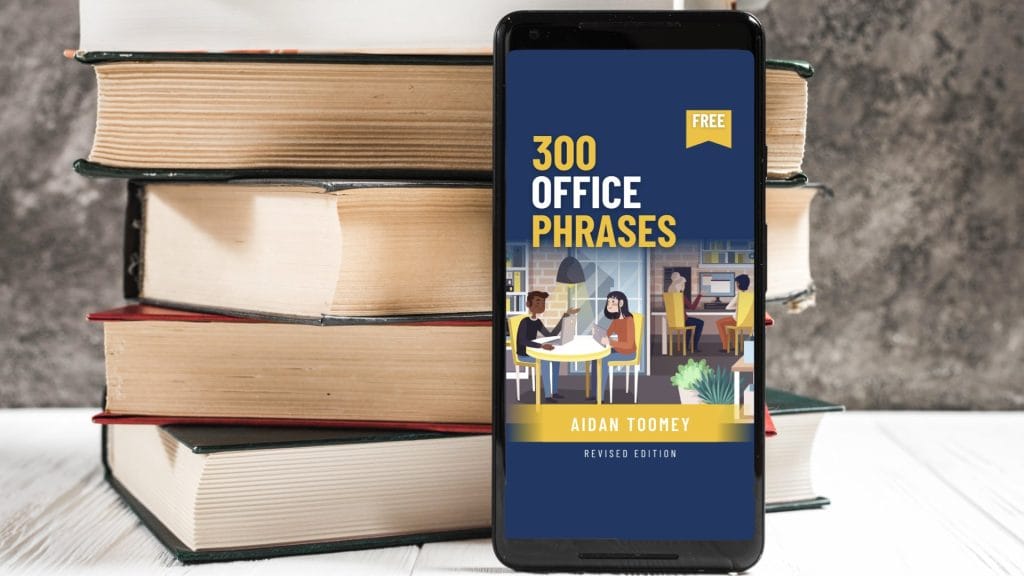
Have you ever sat through a presentation that left you completely unmoved? Or worse—have you delivered one yourself and watched your audience’s eyes glaze over?
As a non-native English speaker navigating the international business world, the right vocabulary can be your secret weapon in the boardroom. I’ve coached hundreds of professionals from over 30 countries, and I’ve noticed one consistent pattern: those who strategically incorporate power words into their presentations consistently achieve better results.
What exactly is a power word? It’s not just any word—it’s a carefully chosen term that triggers an emotional response and compels your audience to act. Power words create immediate impact, helping you connect with listeners on a deeper level, regardless of cultural backgrounds.
In today’s competitive business environment, where attention spans are shrinking by the minute, mastering these linguistic tools isn’t optional—it’s essential for your professional growth.
Let’s explore six power words that will transform your next business presentation from forgettable to unforgettable.
Please like and follow us on YouTube, and LinkedIn. And don’t forget –
FREE Resources to Support Your Learning
Grab our Ultimate 300 Business English Phrases for Communication in the Office ebook further below. Visit our FREE Business English lessons page.
Video Tutorial: Elevate Your Presentations with 6 Powerful Business English Words
Transform your business presentations from ordinary to extraordinary! Our latest video tutorial reveals six essential power words that create emotional impact and drive audience response. Watch as we break down how to use “always,” “available,” “beautiful,” “best,” “brave,” and “bright” with authentic examples and common collocations.
Perfect for non-native English speakers looking to captivate international audiences and deliver presentations with confidence and authority. Discover how these strategic vocabulary choices can significantly enhance your professional communication skills!
1. Always
Meaning: At all times, on all occasions, consistently without fail.
This word builds trust and reliability—crucial qualities in business relationships. When used thoughtfully, “always” establishes patterns and commitments your audience can depend on.
Real-world examples:
“We always prioritise customer feedback before launching new features. This approach has reduced our post-launch issues by 37% this quarter.”
“Our team in Singapore always completes security protocols before sharing sensitive data, which has protected our clients during recent cybersecurity threats.”
“You’re always welcome to schedule follow-up consultations after implementing our solutions—many of our Japanese clients find this ongoing support invaluable.”
Common collocations:
- As always
- Always welcome
- Always try
- Can always
- Always feel
Pro tip: While powerful, use “always” judiciously. Overuse can undermine credibility if your claims seem exaggerated.
2. Available
Meaning: Obtainable, accessible, ready for use or service.
In our fast-paced business environment, availability signals responsiveness and customer focus—qualities highly valued across cultures.
Real-world examples:
“Our technical support team is available 24/7 in multiple languages, including Mandarin, Spanish, and Arabic.”
“The enhanced analytics dashboard is now available through our secure client portal—I’d be happy to demonstrate the new features after this presentation.”
“I’ll be available for one-on-one consultations throughout the conference to address your specific implementation questions.”
Common collocations:
- Be available
- Freely available
- Available from
- Readily available
- Available for
Pro tip: When mentioning availability, be specific about timeframes and access methods to avoid misunderstandings, especially in cross-cultural business settings.
3. Beautiful
Meaning: Having qualities that give pleasure or satisfaction to the senses.
Though perhaps unexpected in business contexts, “beautiful” creates powerful visual and emotional connections that transcend language barriers.
Real-world examples:
“The market research revealed a beautiful opportunity to expand into Southeast Asian markets, particularly Vietnam and Thailand.”
“Our design team created a beautiful user interface that reduced customer support calls by 23% whilst increasing engagement metrics.”
“The collaboration between our European and Latin American divisions produced beautiful results—a truly synergistic approach that we can all learn from.”
Common collocations:
- Very beautiful
- Incredibly beautiful
- Beautiful too
- Exceptionally beautiful
- Was a beautiful
Pro tip: In multicultural business settings, “beautiful” can help bridge communication gaps by evoking universal positive emotions.
4. Best
Meaning: Of the highest quality or being the most suitable, pleasing, or effective.
This superlative immediately establishes excellence and premium positioning—essential for competitive differentiation.
Real-world examples:
“After analysing six potential partners, we identified Accenture as the best strategic fit for our expansion into European markets.”
“Q3 delivered our best-ever profit margins, with particularly strong performance in our B2B division.”
“We’re committed to providing the best possible onboarding experience for international clients, with dedicated support in over 15 languages.”
Common collocations:
- Best possible
- Best ever
- Best practices
- Very best
- The best
Pro tip: When claiming something is “best,” be prepared to substantiate with specific metrics or comparisons to maintain credibility with analytical audiences.
5. Brave
Meaning: Showing no fear of dangerous or difficult things; courageous.
In business presentations, “brave” acknowledges challenges while demonstrating confidence—a powerful combination for inspiring action.
Real-world examples:
“We need to make brave decisions about our supply chain diversification, particularly given recent geopolitical developments.”
“Our brave investment in emerging markets last year has yielded a 28% return despite initial scepticism from stakeholders.”
“I’d like to recognise our product team for their brave approach to completely redesigning our flagship offering based on cross-cultural user feedback.”
Common collocations:
- Incredibly brave
- Extremely brave
- Brave attempt
- Brave decision
- Very brave
Pro tip: “Brave” works particularly well when acknowledging risks while presenting bold strategies, helping to build credibility with risk-averse stakeholders.
6. Bright
Meaning: Full of light, shining; also intelligent or promising.
This versatile word creates optimism and highlights potential—perfect for forward-looking business presentations.
Real-world examples:
“Market indicators point to a bright future for sustainable investments across the APAC region.”
“Our R&D team had the bright idea to incorporate AI-driven analytics, resulting in 40% faster processing times.”
“The collaboration between our multinational teams has produced bright innovations that none could have developed independently.”
Common collocations:
- Bright smile
- Bright future
- Bright idea
- Very bright
- Bright prospects
Pro tip: “Bright” effectively bridges discussions of current challenges with future opportunities, creating a positive framework for change management.
Putting Power Words into Practice
The most effective presenters don’t just memorise these words—they internalise them and use them authentically. Before your next presentation, identify 2-3 power words that align naturally with your message and practise incorporating them at key moments.
Remember that your delivery matters as much as your vocabulary. When emphasising power words, consider:
- Slightly slowing your speech
- Using deliberate hand gestures
- Making direct eye contact with audience members
For non-native speakers, recording yourself using these words in practice presentations can help refine pronunciation and natural delivery.
Explore More Business English Resources
Looking for more Business English tips, courses, and free resources? Visit our LinkTree page to access everything in one place: https://linktr.ee/toomeybusinessenglish
Take Your Skills to the Next Level
If you’re looking to further improve your presentation skills, consider enrolling in our “Improve Your Business English: English for Presentations” course! Designed for non-native speakers, this course will help you master essential phrases and techniques to deliver impactful presentations with confidence.
Key Benefits:
- Learn over 200 essential phrases for every part of a presentation.
- Gain practical skills through interactive activities and quizzes.
- Enjoy lifetime access to course materials and updates.
- Receive a certificate of completion to showcase your skills.
Who Should Enroll?
This course is perfect for professionals, students, and anyone looking to enhance their presentation skills in English.
Enrol today and get the special discount at:- https://toomeybusinessenglish.com/presentations-business-english/
Ready to Master Business Presentations in English?
Book a free 15-minute consultation to discuss how personalised coaching can enhance your presentation skills and boost your confidence. Our targeted training has helped professionals from over 30 countries improve their business English and effectively handle presentation questions.
Find out more at: Business English Training
If You Liked This Article, Try These Next!
- Cut the Jargon in Presentations: Using Business English
Learn how to simplify your language for clearer communication in presentations. - Learn How to Do an Elevator Pitch Using Business English
Master the art of delivering concise and impactful elevator pitches. - Placement Phrases for Presentations Using Business English
Discover essential phrases to effectively position your ideas during presentations. - Using Formal and Informal Phrases to Start Your Presentation
Learn how to effectively engage your audience from the very beginning of your presentations.
FREE! THE ULTIMATE 300 BUSINESS ENGLISH PHRASES FOR COMMUNICATION IN THE OFFICE

